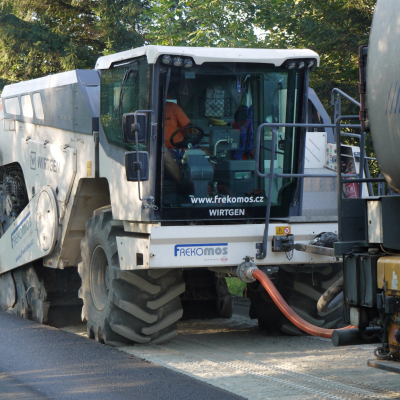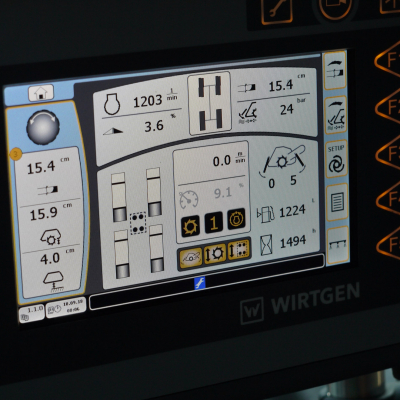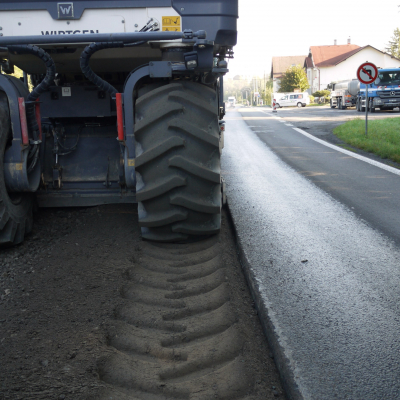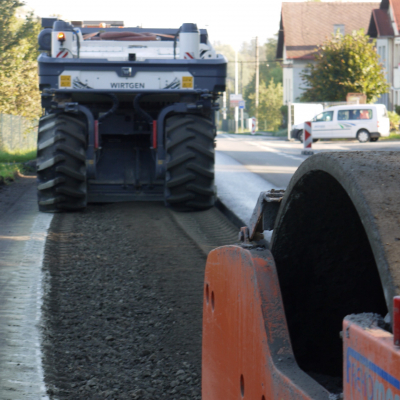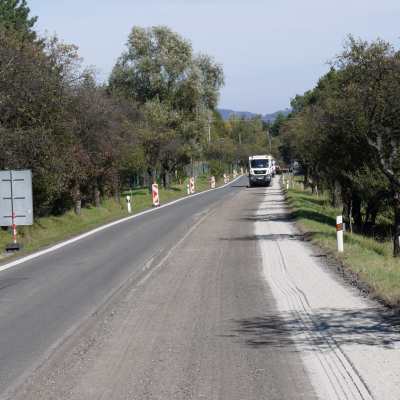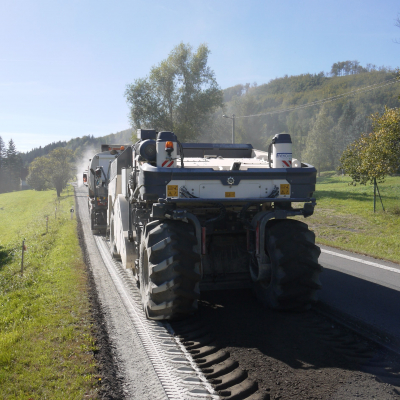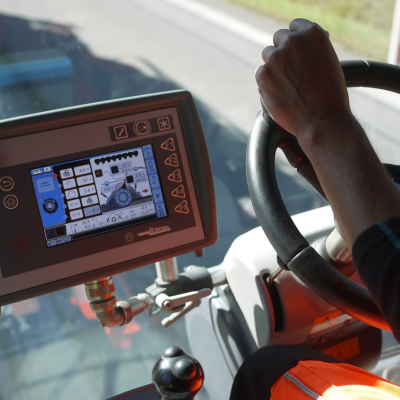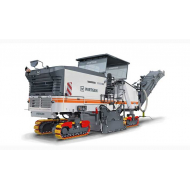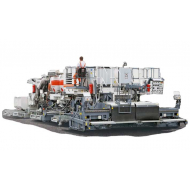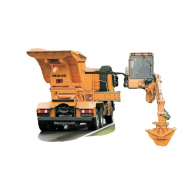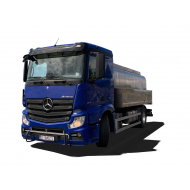Cold recycling on site
Technology based on the secondary use of materials already built into the construction of the road surface. It is used where the load capacity of the road is exhausted and the road surface is so damaged that the reconstruction of a number of layers is essentially required. A sign of such damage is the appearance of multiple cracks, frequently accompanied by numerous potholes and surface deformations, particularly in the vehicle tracks or at the road edges.
Cold state recycling technology on site enables the improvement of the quality of the base and/or subgrade construction of the layer in a thickness of 12 – 25 cm through the addition of hydraulic and asphalt binding agents or by filling with gravel according to the proposed formulation.
Advantages of cold recycling on site
- low economic and time demand factor of repair (low material comsumption and reduction on heavy construction technology
- Extension of the life span of road construction;
- Enviromental effect(saving natural resources , energy savings);
- povećanje udobnosti vožnje;
- Increased driving comfort and safety for drivers;
Binding agents used
- Hydraulic binding agent – cement and other hydraulic road binding agents
- Asphalt binding agent – asphalt emulsion or asphalt foam (asphalt foam is generated directly in the recycler by mixing asphalt and water in a foaming machine) ;
- Combined binding agent (mixture of cement and asphalt emulsion or cement and asphalt foam);
Recycling technology

Filling with gravel
If the gradation curve of the original layer is unsuitable, filling with a suitable grading of gravel directly onto the surface of the layer is performed before the recycler.
Milling and granulation of existing layer
This is performed by traverse with the recycler on the original layer by the activity of the milling (mixing) drum to the prescribed depth.
We distinguish between two phases:
Pre-milling and re-profiling (used upon adjustment of transverse and lengthwise shape of road surface, height adjustment of profile grade or for homogenisation of layers) The grain fineness is homogenised to the prescribed thickness by pre-milling of the existing layer(s). At the same time gravel spread before is mixed into the pre-milled compound, thus adjusting the gradation curve according to the proposed formula. This is used to advantage in adjustment of a number of layers with varying grain fineness, when the entire complex of layers is homogenised by pre-milling and re-profiling, and shaped to the prescribed transverse and lengthwise incline. This phase may be omitted in the technology on the precondition that it is not necessary to adjust the layer in terms of height and that homogenisation is not required.
Actual recycling
In this phase the original compound is degraded and mixed with further components (binding agents, water, gravel)
Dosing of binding agent, mixing of compound
Each binding agent is dosed separately in the type and quantity stipulated by the laboratory. Cement or other hydraulic binding agent is spread directly onto the recycled surface of the roadway by a dosing device.
The process of dosing the asphalt binding agent (asphalt emulsion, asphalt foam) and water is automatically regulated by an electronic pump, depending on the traversing speed and the width of adjustment in such a manner as to ensure that the prescribed quantity is always dosed.
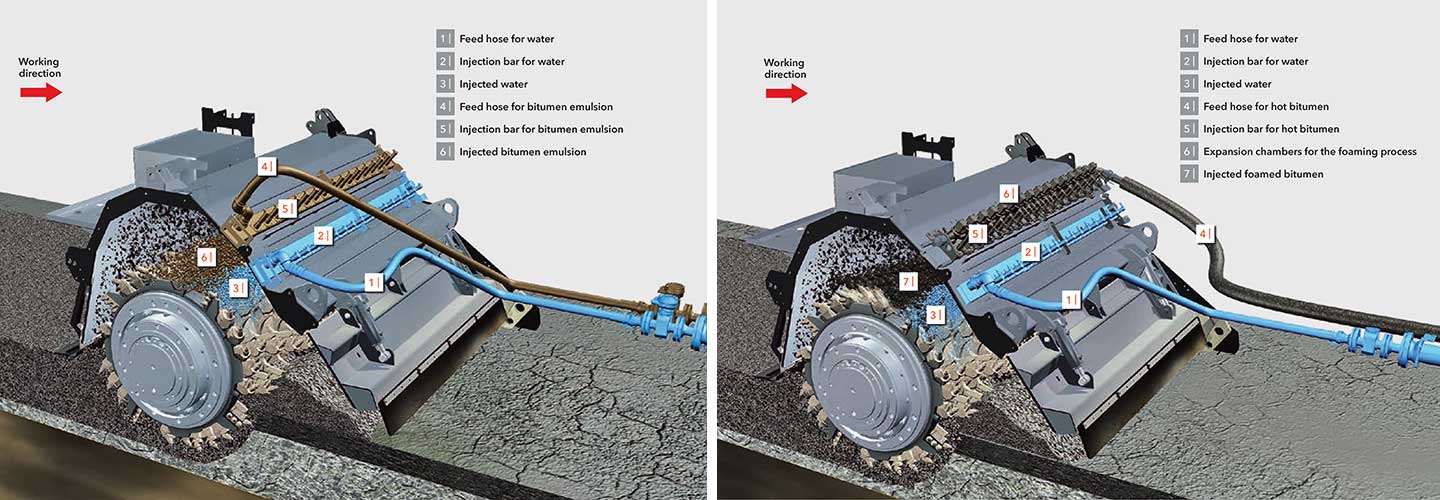
Spreading and compacting of compound
The homogenised compound is spread using a grader to the required height and lateral incline. Compacting is performed according to the rolling scheme by a steamroller equipped with vibration, either by a towing vehicle or tandem roller.
MACHINE FLEET

Wirtgen WR 240i
Soil stabilizer and cold recycler Wirtgen WR 240i is the all-rounder for highest levels of flexibility. With a working width of 2.40 m and a maximum working depth of 510 mm, the recycler is highly flexible when it comes to operations in soil stabilising and cold recycling. Thanks to its high performance levels in milling and mixing and its variable mixing chamber, consistent and homogeneous mixing results can be achieved.
For soil stabilization, the ideal performance range is between 4000 to 8000 square metres per day.
Operativna težina stroja iznosi 29,4 t.
Working with: 2 400 mm
Working depth: 0 – 510 mm
Engine power: 619 HP
Minimum working radius: 3,15 m
Operating weight: 29 400,00 kg
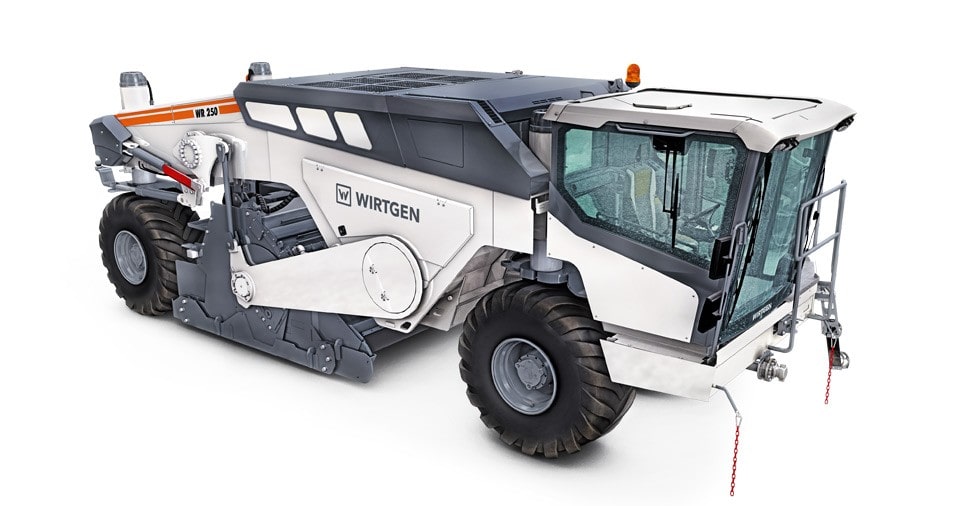
Wirtgen WR 250
Soil stabilizer and cold recycler Wirtgen WR 250 is a high-performance machine designed to cater to the particularly demanding applications. Its tremendous milling and mixing performance enables the WR 250 to tackle even the toughest jobs in soil stabilization and pulverize hard asphalt layers.
For soil stabilization, the ideal performance range is between 6000 to 12000 square metres per day.
Working width: 2 400 mm
Working depth: 0 – 560 mm
Engine power: 777 HP
Minimum working radius: 3,15 m
Operating weight: 31 000,00 kg
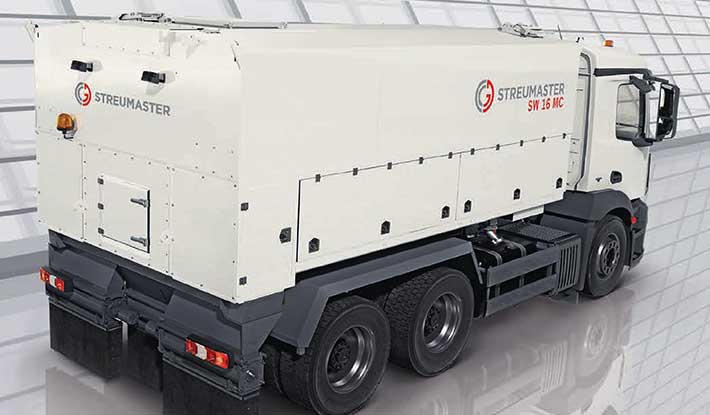
WIRTGEN SW 16 MC
Wirtgen SW 16 MC is high-precision, highly efficient binder discharge.
Container capacity: 16 m3
Working width: max 2,46 m
Spreading rate at 2 km/h: 1-60 l/m2
Weight: 4.500 kg


